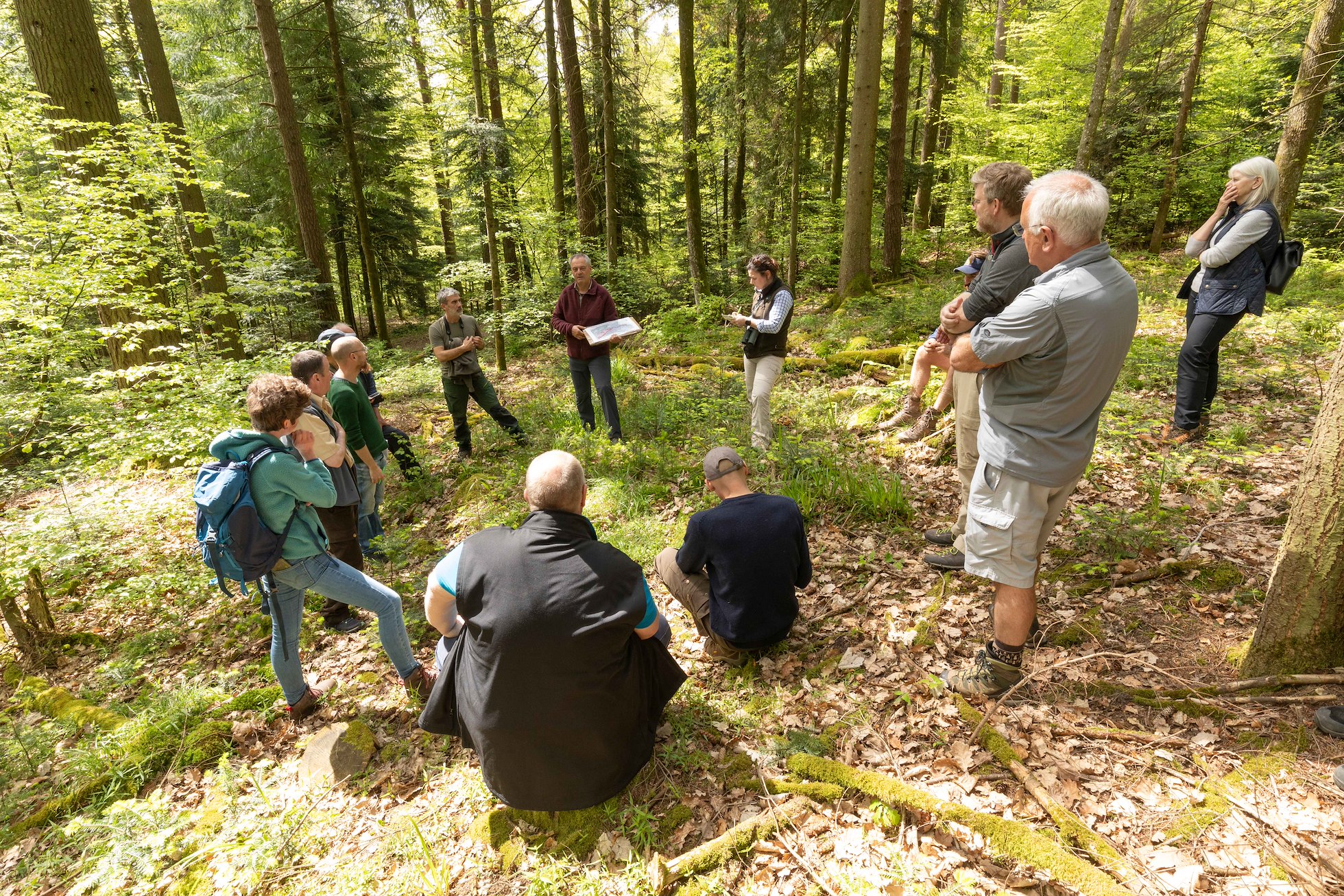Lynx watch: Swiss study tour explores the realities of a reintroduction
While January’s unlicensed abandonment of lynx in the Cairngorms continues to generate headlines, a study tour to Switzerland reveals valuable lessons for Scotland.

To explore what it might be like to coexist with lynx, the Lynx to Scotland project escorted stakeholders from the farming, shooting and forestry sectors, together with representatives from the Cairngorms National Park, on a fact-finding mission to the Swiss Jura region last year. The group's report of this study tour is published today, revealing their key insights from the trip.
Like Scotland, Switzerland is home to a mix of habitats, with an almost identical area of woodland and similarly abundant wild prey. Sheep in the Swiss Jura are often kept in fields without attendant shepherds, just as they are across much of Scotland, making comparisons with Switzerland especially useful.
The visit highlighted to the group how coexisting with lynx can be both easier and more complicated than is often imagined. The lynx was revealed to be more adaptable than previously thought, allaying concerns about Scotland’s ecological suitability. But the different nature of sheep farming in Scotland – and the far greater number of sheep – were still concerns for attendees who were otherwise impressed by the relatively limited number of lynx-livestock conflicts in Switzerland.
One attendee reflected that ‘...the size of the Scottish sheep flock and the way it’s managed means the challenge of lynx predation would be greater in Scotland.’ However, despite similar reservations, another felt that ‘...a Swiss-style reintroduction and conflict management structure could work in Scotland [with a] modernisation of wildlife conflict management and a change in culture.’
Study tour guide, Hugh Webster, who manages rewilding relations for SCOTLAND: The Big Picture, said: ‘The recent illegal release of lynx in the Highlands has sparked debate over the return of this missing native species, and also underlined the risks of unlawful action, raising concerns about animal welfare, legal processes and the importance of consultation. A responsibly planned and licensed reintroduction, built on respectful dialogue and trust, is the only way to ensure that any future reintroduction is a success for both nature and people.’
Switzerland reintroduced their lynx over 50 years ago, with over 200 animals now roaming landscapes that still support traditional livestock farming. The Swiss wildlife management model offers useful lessons as Scotland considers how coexistence could best be achieved, following a potential reintroduction here.
ENDS
Notes to editors
-
The report is available here: https://www.
scotlandbigpicture.com// Images/2025/02/LTS-study-tour- report-v3.pdf -
The report describes the history of Switzerland’s lynx reintroduction, lessons from their experience, and the group’s interactions with Swiss farmers, hunters and foresters. The report was reviewed and agreed by all who travelled with the group in a spirit of transparency and collaboration.
-
The Lynx to Scotland project is a partnership between SCOTLAND: the Big Picture, Trees for Life and the Lifescape Project, who together are seeking to return lynx to the Scottish Highlands, through a carefully managed reintroduction. For more information visit: https://www.
scotlandbigpicture.com/lynx- to-scotland -
SCOTLAND: The Big Picture is a charity working to make rewilding happen across Scotland, as a solution to the growing climate and biodiversity crises. For more information visit: https://www.
scotlandbigpicture.com/home

